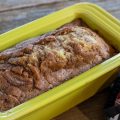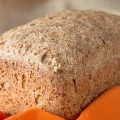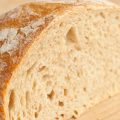Ever found yourself wrestling with your sourdough bread, trying to make it soft enough for that dream sandwich? You’re not alone. Many of us have faced the challenge of achieving that perfectly soft, squishable sourdough, only to end up with a loaf more suited to a workout than a lunch break. That artisanal chewy crumb, while perfect for tearing and dipping, often puts up a fight when sandwiched between layers of your favorite fillings. But fear not, fellow bread enthusiasts! There’s a way to bake sourdough that’s not just for show but also melts in your mouth and is begging to be loaded up with all the sandwich goodies.
I’m thrilled to share with you the secrets behind baking softer sourdough bread, and my own recipe! Plus, I’ll share the scoop on which moisture-loving ingredients can help lock in that softness, ensuring your slices are so soft it’s like biting a cloud!
![Soft Sourdough Bread [Easy Recipe + Tips] 116 Soft sourdough bread [easy recipe]](https://www.mydailysourdoughbread.com/wp-content/uploads/2024/02/Soft-Sourdough-Bread-6-840x473.jpg)
Table of Contents
- Ingredients
- How to Bake Soft Sourdough Bread
- Problems and Tips for Troubleshooting
- Ideas for Your Soft Sourdough Bread
- Storing and Serving to Keep Soft
- Pairing Ideas for Your Sourdough
- Soft Sourdough Goodness
- FAQs
Ingredients
Creating a soft and pillowy sourdough loaf starts with gathering the right ingredients. Here is what you’ll need:
- 3 cups (360g) bread flour or all-purpose flour
- 1 cup (120g) whole wheat flour
- 1⁄2 cup (60g) rye flour (optional for flavor)
- 1 1⁄2 cups (360ml) water
- 1⁄2 tablespoon (9g) salt
- 1⁄2 cup (120g) mature sourdough starter
The combination of bread flour and whole wheat flour gives both structure and complexity of flavor. The higher percentage of water, known as the hydration level, contributes to a softer open crumb. Salt subtly enhances the flavors without overpowering them. And finally, the active sourdough starter gives rise to the loaf while producing the beloved tang.
With these ingredients, anyone can easily mix up dough that bakes into the perfect tender and pillowy sourdough loaf. Adjusting the flour ratios and hydration level also allows customizing the texture to your preference.
![Soft Sourdough Bread [Easy Recipe + Tips] 117 Soft sourdough bread [easy recipe]](https://www.mydailysourdoughbread.com/wp-content/uploads/2024/02/Soft-Sourdough-Bread-3-473x840.jpg)
How to Bake Soft Sourdough Bread
Crafting the ultimate soft sourdough loaf is a labor of love, truly. It’s about getting your hands in there, mixing, kneading, and really getting to know your dough from start to finish. It takes a bit of patience, sure, especially as you wait for those flavors to deepen and develop during fermentation. But trust me, it’s worth every moment.
1. Mixing the Dough
In a large bowl, combine the flour, salt, water, and mature starter until the dry ingredients are fully absorbed. Using your hands, squeeze and massage the shaggy dough for a few minutes to begin the development of the gluten strands. The dough will be quite sticky at this early stage – resist the temptation to add more flour as the long bulk fermentation still ahead will allow the dough to fully hydrate.
2. Kneading
Once mixed, turn out the dough onto a clean work surface to begin kneading. Spend at least 10-15 minutes vigorously and rhythmically stretching, folding, and pressing the dough to align the gluten networks. As you knead, scrape any sticky bits from the work surface back into the main dough ball. When complete, the dough will feel smooth, elastic, and cohesive. Form it into a taut round.
3. First Rise
Place the kneaded dough ball into a lightly oiled, covered container to rise at room temperature for 4 to 6 hours. Allowing this lengthy first fermentation enables the wild yeast in the sourdough starter to fully multiply and produce the much-desired tangy, complex flavors. Resist peeking at or touching the dough during this stage.
4. Shaping
Once doubled in size, turn out the airy dough onto a clean work surface. Gently press it into a rectangle and fold the sides into the center. Flip and tuck to form a taut round once more. For a professional appearance, place seam side down into a floured proofing basket, cover with plastic wrap, and set aside to proof for 30-45 more minutes.
5. Scoring
After proofing, delicately invert the dough onto a sheet of parchment set in a Dutch oven or onto a preheated baking stone. With a lame or sharp razor, score the top of the loaf with 1⁄4” deep cuts in your desired pattern. Scoring allows the dough to properly expand so your loaf rises upwards and outwards as it bakes.
6. Baking
Whether using a Dutch oven or baking stone setup, be sure to pour 1 cup of hot water into the bottom of the oven before sliding in the bread for steam. Bake covered at 475°F for 30 minutes. Then remove the lid and continue baking for 15-20 more minutes until the crust is deep brown. For maximum crustiness, resist immediately cutting into the piping hot loaf.
![Soft Sourdough Bread [Easy Recipe + Tips] 118 Soft sourdough bread [easy recipe]](https://www.mydailysourdoughbread.com/wp-content/uploads/2024/02/Soft-Sourdough-Bread-2-840x473.jpg)
Problems and Tips for Troubleshooting
Baking sourdough bread at home comes with a learning curve. As you practice, you’ll start to intuitively understand what the dough needs at every stage, guiding it along its journey to becoming that beautifully puffy, irresistibly chewy masterpiece.
Here are some tips for troubleshooting these three common issues.
Dense, Heavy Crumb
If your sourdough loaf turns out dense and heavy, with a tight crumb structure rather than light and airy, the likely culprits are underproofing or issues with dough strength.
First, check that your dough has enough time to fully ferment. Sourdough needs a long 4+ hour first rise to develop flavor. Underproofing prevents those bubbles from inflating the crumb. If you think time is the issue, let your next loaf proof longer before baking.
You’ll also get dense loaves if your dough lacks strength. Using a nicely fermented starter, sufficiently kneading the dough, and letting it autolyze before adding salt all build gluten development. Skipping steps compromises that structure leading to flatter loaves. Revise your process to mix dough that can stretch and hold air.
Lack of Rise
If your sourdough isn’t rising much during proofing or baking, the problem likely lies with your starter or dough fermentation. Always use a starter that has recently peaked after feeding at its most active stage. Old or neglected starters simply won’t have the lively yeast to produce rise.
Tough Crust
If you end up with a crust that’s too thick or crunchy, it likely baked too long. Keep a close eye on loaf color in the final bake stages. Once deep brown, remove it from the oven so the crust stays tender with a slight chew. Proper steaming also ensures the crust sets tender by keeping the outer layers supple and flexible early in baking.
![Soft Sourdough Bread [Easy Recipe + Tips] 119 Soft sourdough bread [easy recipe]](https://www.mydailysourdoughbread.com/wp-content/uploads/2024/02/Soft-Sourdough-Bread-7-840x473.jpg)
Ideas for Your Soft Sourdough Bread
One of the joys of baking sourdough at home lies in experimenting with fun variations. A basic sourdough loaf provides a wonderful canvas onto which both sweet and savory ingredients can be layered for added texture and flavor. Whether mixing in herbs, nuts, seeds, olives, cheeses, or dried fruits, the possibilities for customization feel endless.
Herbs, Nuts and Seeds
Introducing new flavors directly into the dough takes your loaf from basic to gourmet. Rosemary, basil, oregano, thyme, and sage all infuse wonderfully, lending back notes of woodsy, floral, or zesty essence. Toast walnuts, pecans, or almonds to intensify their crunch and nuttiness before folding them into the mixed dough. Chia, flax, sesame, and poppy seeds also add delicate crunch and nutrition.
Aim for no more than a 1⁄2 cup total of add-in mix-ins per loaf recipe. Overloading the dough causes an imbalance in texture or inhibits rising. Play with different combinations to find your perfect blend of flavors and crunch. Top favorites include rosemary walnut sourdough or three-seed sourdough dotted with sesame, flax, and poppy seeds.
Olives, Dried Fruit and Cheeses
Beyond herbs and nuts, bakers can also mix in savory or sweet bits to create a multi-texture, multi-flavor loaf. Kalamata or green olives, both sliced and whole, provide a nice salty contrast in rich olive sourdough loaves. For something sweeter, small chunks of dried cranberries, cherries, apricots, or raisins intersperse little bursts of bright sweetness. Even strongly flavored hard cheeses like Parmesan, Asiago, or Romano finely grated into dough bakes up intensely rich and savory.
When adding chunkier mix-in pieces, allow the dough extra time to properly hydrate during the first rise to prevent dense spots. Slightly indented pieces will sink further during baking, so aim to evenly distribute throughout the dough. With so many possible permutations for customization, creativity feels boundless when it comes to designing your signature loaf.
Storing and Serving to Keep Soft
One of the hallmarks of great homemade bread is its freshness. With sourdough, proper storage after baking plays a key role in preserving moisture and extending that just-baked goodness for as long as possible.
Slice only what you plan to eat. Wrap the cut sides in plastic wrap before placing them back into the bread box or paper bag. An airtight container like a bread box works best to prevent the loaf from drying out.
For longer-term storage, double-wrap slices or halves in freezer bags. Press out excess air before sealing and freeze for up to 3 months. Thaw at room temperature still wrapped. The crust may soften slightly but the interior crumb retains its pillowy texture.
Beyond basic slicing, get creative in how you serve warm sourdough bread. Tear off chunks for dipping in olive oil, balsamic vinegar, or compound butter. Top slices with smashed avocado, ricotta, or hummus for an instant appetizer. Brush with garlic butter before toasting for garlic bread. Even turn leftover bread into bread pudding or French toast.
Pairing Ideas for Your Sourdough
A crusty slice of tender sourdough deserves a worthy culinary companion. Creative pairings transform simple bread into gourmet fare. Sourdough’s tangy flavor profile plays well with ingredients across the flavor spectrum, making it an adaptable base for meals or snacks.
Soups and Stews
Few can resist soaking up the last bits of a steaming bowl of soup or stew with warm sourdough bread. The bread’s absorbent texture soaks up the hearty broth beautifully. Classics like potato leek, tomato basil, or chicken noodles taste even more comforting when dunking bites of sourdough. For a heartier meal, use thick slices to soak up chunky beef or lentil stews.
Spreads and Dips
Slather slices of sourdough with sweet or savory spreads for an instant appetizer. Mix up compound butter by blending herbs, honey, or spices into softened butter before spreading it onto the bread. For something creamy and cool, top slices with hummus, babaganoush, or tzatziki. Or go the jam route with homemade preserves, chutney, or fruit compotes.
Sandwiches and Toast
When it comes to sandwiches, sourdough adds far more character than regular white bread. Construct towers of ingredients between slices or toast open-faced. Pile on fixings like smashed avocado, bacon, eggs, and cheese for a breakfast sandwich. Opt for grilled veggies, fresh mozzarella, and pesto for a panini.
Get creative with global flavors on your soft sourdough sandwich bread by using hummus, falafel, lamb, or tahini sauce.
The possibilities feel endless when building between two slices of sourdough!
Soft Sourdough Goodness
Ah, baking that soft, pillowy sourdough loaf—it’s a bit of a culinary adventure, requiring both patience and a dash of skill. It’s an amazing journey. Whether you’re layering, spreading, or dunking, the soft crust of this sourdough loaf is your go-to for all things delicious. Trust me, once you’ve tried it, there’s no going back.
Share your own secrets to soft sourdough bread below!
FAQs
Is sourdough bread good for sandwiches?
Yes, sourdough bread makes excellent sandwich bread. Its tangy flavor stands up well to sandwich fillings without overpowering them. Sourdough’s chewy texture also helps hold ingredients in place. Just be sure not to overload it or the bread may get too soggy.
What goes best with sourdough bread?
Hearty fillings like roasted meats, grilled vegetables, aged cheeses, avocado, tomatoes, and flavorful spreads like mustard, pesto, or olive tapenade all pair deliciously with sourdough’s distinctive tang. The bread’s texture also complements thick sandwich ingredients.
Why is my sourdough sandwich bread dry?
If your sourdough sandwich bread is too dry, it’s likely slightly overbaked. Sourdough needs less baking time than most breads. Try checking it a few minutes early when making sandwiches. Storing the cut bread too long before eating can also cause it to dry out.
How do you make sourdough bread softer?
For softer sourdough sandwich bread, use plenty of steam in the oven, avoid overbaking, and let it fully cool before cutting. Adding a small amount of oil or soft butter helps retain moisture too. Storing the loaf in a plastic bag helps prevent drying.
![Soft Sourdough Bread [Easy Recipe + Tips] 120 Soft sourdough bread [easy recipe]](https://www.mydailysourdoughbread.com/wp-content/uploads/2024/02/Soft-Sourdough-Bread-5-768x432.jpg)
Soft Sourdough Bread
Anyone can easily mix up dough that bakes into the perfect tender and pillowy sourdough loaf.
- Total Time: 6 hrs and 45 mins
- Yield: 1 loaf 1x
Ingredients
- 3 cups (360g) bread flour or all-purpose flour
- 1 cup (120g) whole wheat flour
- 1⁄2 cup (60g) rye flour (optional for flavor)
- 1 1⁄2 cups (360ml) water
- 1⁄2 tablespoon (9g) salt
- 1⁄2 cup (120g) mature sourdough starter
Instructions
- In a large bowl, combine the flour, salt, water, and mature starter until the dry ingredients are fully absorbed.
- Use your hands to squeeze and massage the shaggy dough for a few minutes to start developing the gluten strands. The dough will be sticky; avoid adding extra flour.
- Allow the dough to sit, as the upcoming bulk fermentation will enable it to fully hydrate.
- Turn the dough onto a clean work surface to begin kneading.
- Spend at least 10-15 minutes vigorously stretching, folding, and pressing the dough to align the gluten networks.
- Scrape any sticky bits from the work surface back into the dough. Once smooth, elastic, and cohesive, form it into a taut round.
- Place the kneaded dough in a lightly oiled, covered container to rise at room temperature for 4 to 6 hours.
- Avoid disturbing the dough during this time to let the wild yeast in the sourdough starter multiply and develop flavor.
- Once the dough has doubled in size, turn it out onto a clean work surface.
- Gently press into a rectangle and fold the sides into the center. Flip and tuck to form a taut round again.
- Place the dough seam side down in a floured proofing basket, cover, and set aside to proof for 30-45 minutes.
- Invert the proofed dough onto a sheet of parchment in a Dutch oven or on a preheated baking stone.
- Score the top of the loaf with ¼” deep cuts in your desired pattern to allow expansion during baking.
- Pour 1 cup of hot water into the bottom of the oven for steam before sliding in the bread.
- Bake at 475°F covered for 30 minutes, then uncover and continue baking for 15-20 minutes until the crust is deep brown.
Notes
- Avoid cutting into the loaf immediately after baking to preserve crustiness.
- Prep Time: 45 mins
- Cook Time: 50 mins
- Category: bread
Nutrition
- Serving Size: 1 slice
- Calories: 176 kcal
- Carbohydrates: 40 g
- Protein: 6 g





![How To Make Bazlama [Turkish Flat Bread Recipe] 125 How to make bazlama [turkish flat bread recipe]](https://www.mydailysourdoughbread.com/wp-content/uploads/2024/03/Bazlama-4-120x120.jpg)